Search Result
Results for "
bronchitis
" in MedChemExpress (MCE) Product Catalog:
6
Isotope-Labeled Compounds
| Cat. No. |
Product Name |
Target |
Research Areas |
Chemical Structure |
-
- HY-N0550
-
|
(-)-β-Pinene
|
Bacterial
|
Infection
|
|
β-Pinene ((-)-β-Pinene), a major component of turpentine, inhibit infectious bronchitis virus (IBV) with an IC50 of 1.32 mM. β-Pinene presents antimicrobial activity .
|
-
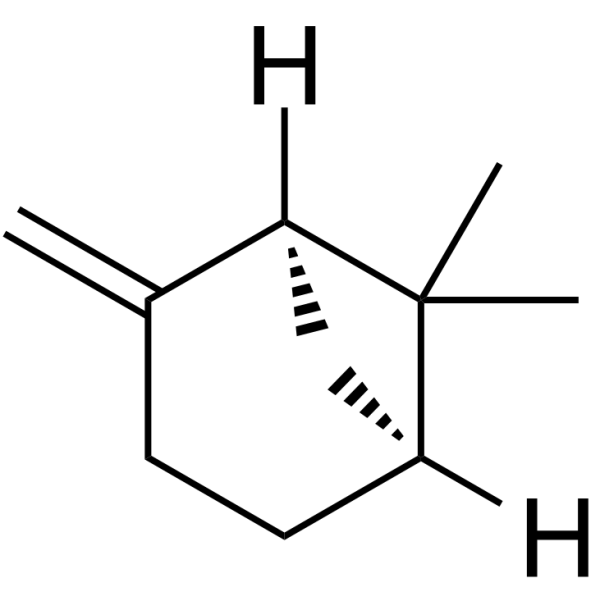
-
- HY-66011
-
|
BAY 12-8039
|
Bacterial
Antibiotic
|
Infection
Cancer
|
|
Moxifloxacin Hydrochloride (BAY 12-8039) is an oral 8-methoxyquinolone antimicrobial for use in the treatment of acute bacterial sinusitis, acute bacterial exacerbations of chronic bronchitis, and community-acquired pneumonia .
|
-
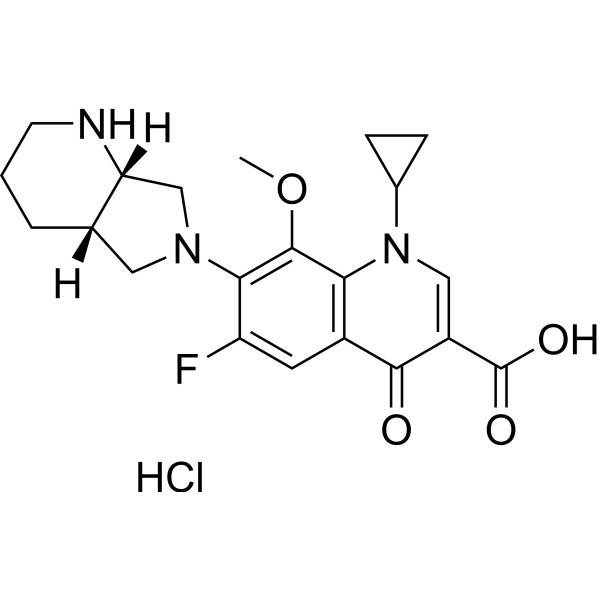
-
- HY-121185
-
|
|
Adrenergic Receptor
|
Infection
Inflammation/Immunology
|
|
Hexoprenaline is an orally active and selective β-adrenergic receptor agonist that dilates the bronchi. Hexoprenaline can be used in the study of bronchospasm, including asthma, bronchitis, and emphysema .
|
-
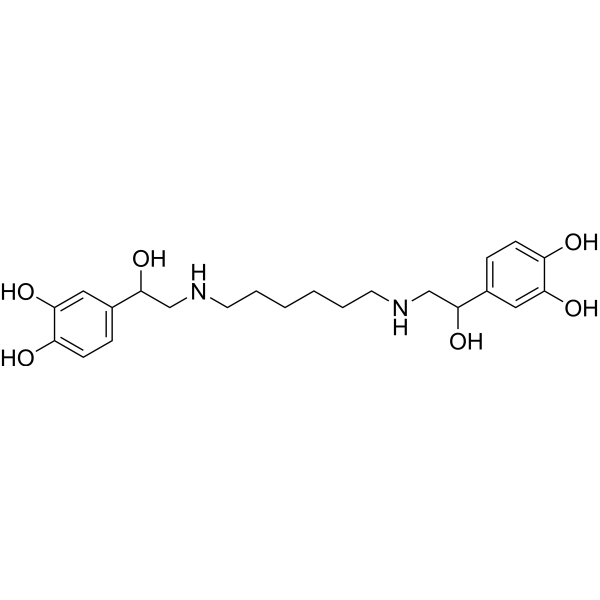
-
- HY-N10368
-
|
|
Parasite
|
Infection
Neurological Disease
Inflammation/Immunology
|
|
Shinjulactone M is a quassinoid isolated from various parts of Ailanthus species. Ailanthus, an important genus of the Simaroubaceae family, can be used as an febrifuge (antimalarial) and anthelmintic, and is given for the research of chronic bronchitis, epilepsy and asthma .
|
-

-
- HY-125495
-
|
|
Others
|
Inflammation/Immunology
|
|
Telmesteine is an amucolitic agent. Telmesteine has anti-protease activity. Telmesteine inhibits LPS-induced NO production in RAW264.7 cells. Telmesteine can be used for research of inflammation, such as acute and chronic bronchitis and obstructive airways disease .
|
-
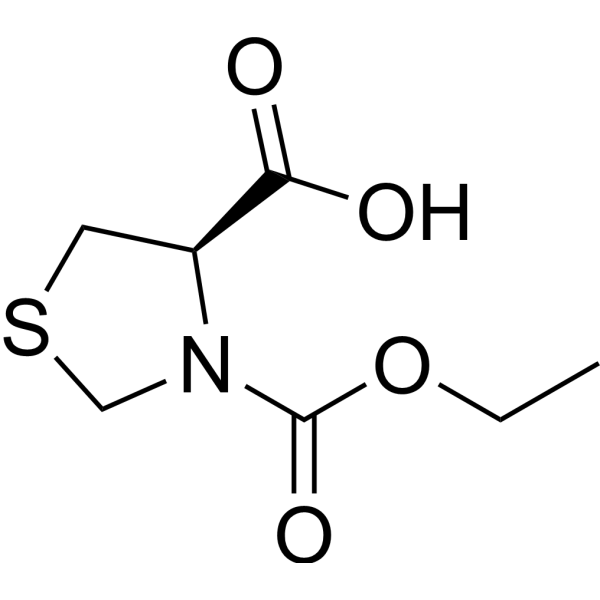
-
- HY-B0944
-
|
|
Bacterial
|
Inflammation/Immunology
|
|
Pidotimod is an orally active dipeptide immunostimulant with immunomodulatory properties on the adaptive and the innate immune responses. Pidotimod increases macrophage activity and humoral immune functions. Pidotimod can be used for the research of chronic bronchitis, chronic obstructive pulmonary disease (COPD), bronchiectasis, and chronic idiopathic urticaria,et al .
|
-

-
- HY-B0198
-
-
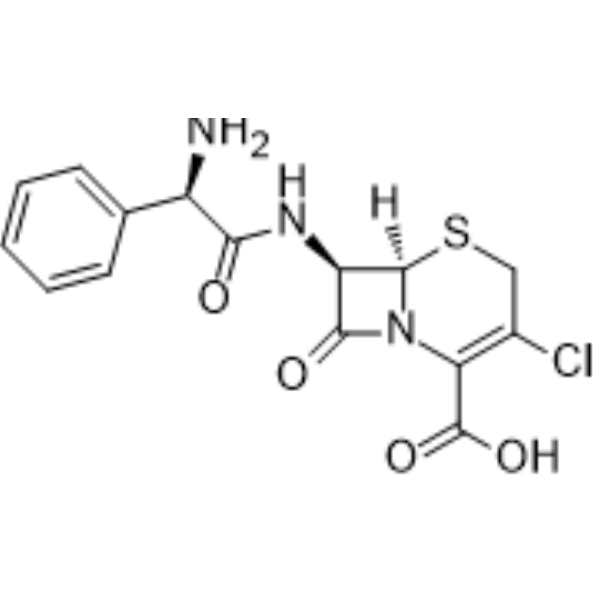
-
- HY-108662
-
|
2,2'-Pyridylisatogen tosylate
|
P2Y Receptor
|
Inflammation/Immunology
|
|
PIT (2,2'-Pyridylisatogen tosylate) is a selective and non-competitive antagonist of P2Y1 receptor with an IC50 value of 0.14 μM for human P2Y1 receptor. PIT antagonizes P2Y1 receptor signaling without affecting nucleotide binding. PIT is an irreversible antagonist of responses to ATP at metabotropic purinoceptors (of the P2Y family) in some smooth muscles. PIT can be used for the research of chronic bronchitis and asthma .
|
-
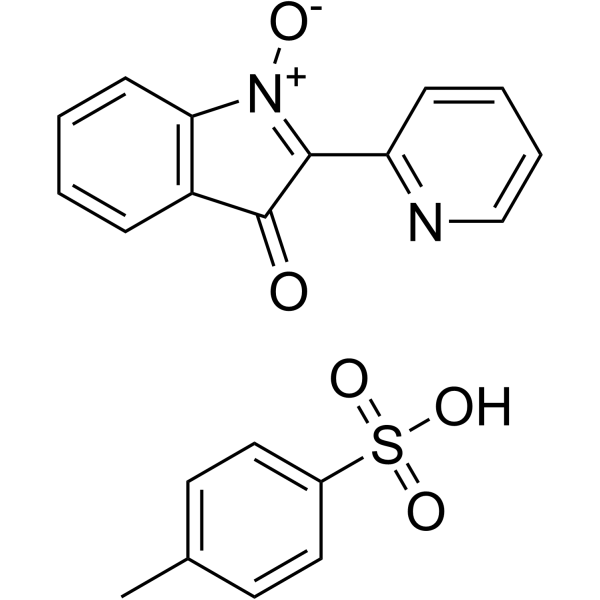
-
- HY-100250
-
-
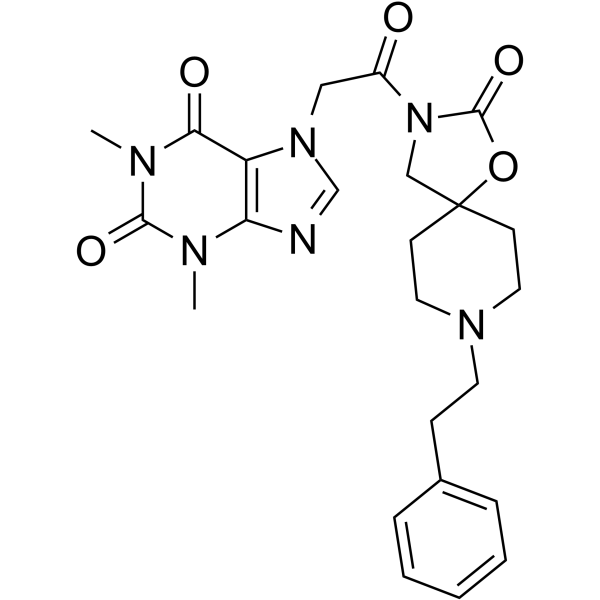
-
- HY-A0062
-
|
HMR3647; RU66647
|
Bacterial
Antibiotic
|
Infection
Inflammation/Immunology
|
|
Telithromycin (HMR3647) is a novel ketolide antibiotic that structurally resembles macrolides. Telithromycin belongs to the ketolide family that is characterized by a keto group at position 3 of the macrolide ring and is active against bacteria causing community-acquired pneumonia, acute exacerbation of chronic bronchitis, and acute sinusitis. Telithromycin also has similar immunomodulatory effects as macrolides. Telithromycin can be used for the research of respiratory infections including bronchial asthma .
|
-
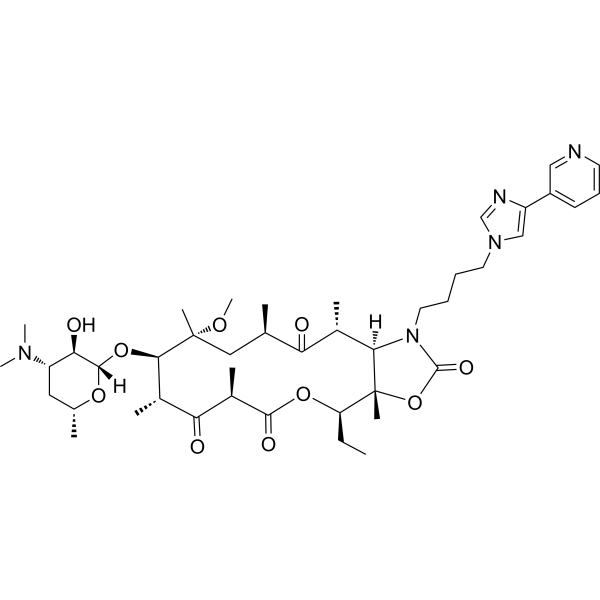
-
- HY-17560
-
-
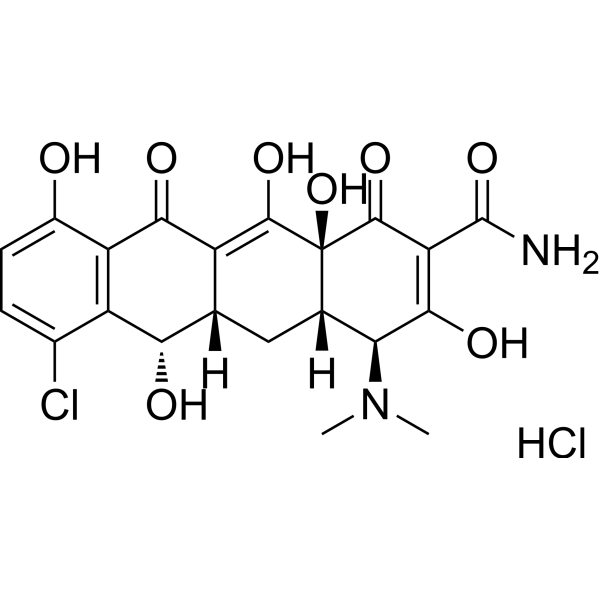
-
- HY-B1063
-
|
Terpin monohydrate; cis-Terpin hydrate
|
Others
|
Inflammation/Immunology
|
|
Terpin hydrate is an expectorant, commonly used to loosen mucus in patients presenting with acute or chronic bronchitis, and related conditions.
|
-

-
- HY-17477
-
|
|
Others
|
Inflammation/Immunology
|
|
Guacetisal is obtained from the esterification of acetylsalicylic acid with guaiacol which has the potential for chronic bronchitis treatment extracted from patent CN 106866420 A.
|
-
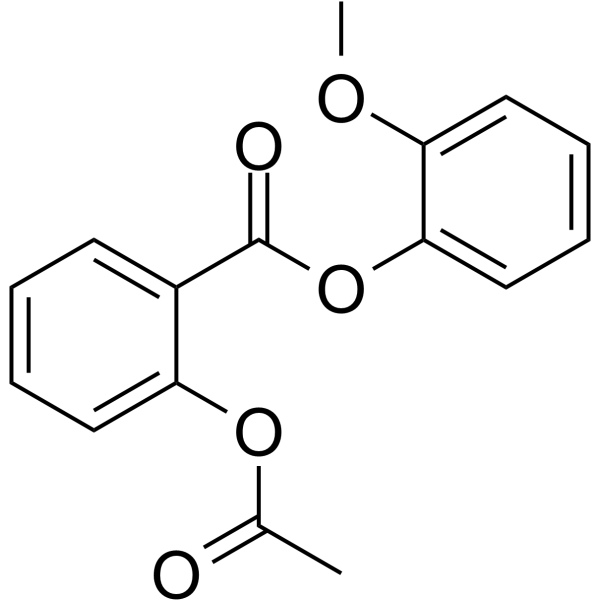
-
- HY-66011A
-
Moxifloxacin
Maximum Cited Publications
7 Publications Verification
BAY 12-8039 free base
|
Bacterial
Antibiotic
|
Infection
Cancer
|
|
Moxifloxacin is an orally active 8-methoxyquinolone antimicrobial for use in the treatment of acute bacterial sinusitis, acute bacterial exacerbations of chronic bronchitis, and community-acquired pneumonia .
|
-
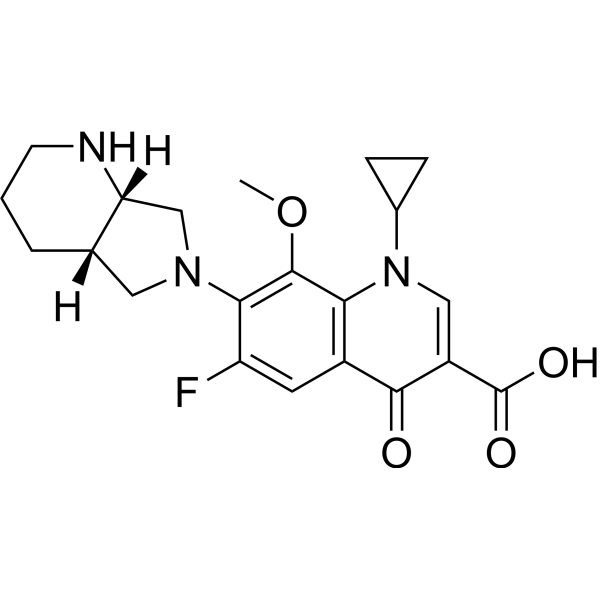
-
- HY-107051
-
|
GW 994
|
CCR
|
Inflammation/Immunology
Endocrinology
|
|
GW 766994 (GW 994) is an orally active and specific chemokine receptor-3 (CCR3) antagonist. GW 766994 has the potential for asthma and eosinophilic bronchitis research .
|
-
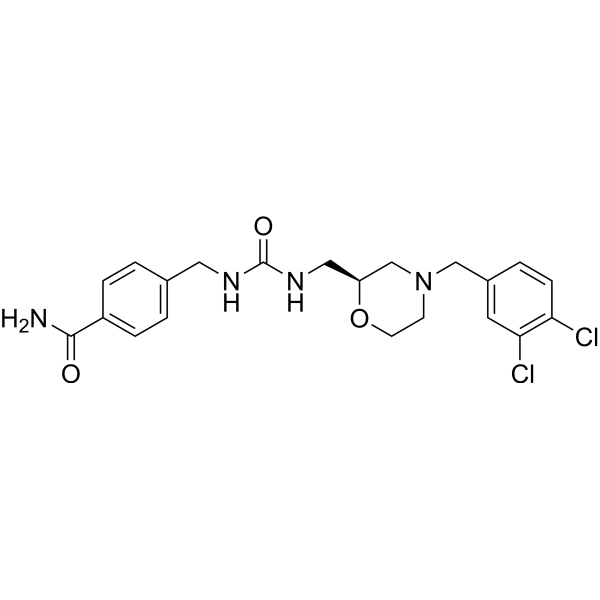
-
- HY-N12552
-
|
Hemslecin A 2-O-β-d-glucopyranoside
|
Others
|
Infection
|
|
Cucurbitacin IIa 2-O-β-D-glucoside is a glycoside cucurbitacin isolated from the genus Hemsleya (Cucurbitaceae). Extracts of Hemsleya have the potential to be used in research on bronchitis, bacillary dysentery, and tuberculosis .
|
-
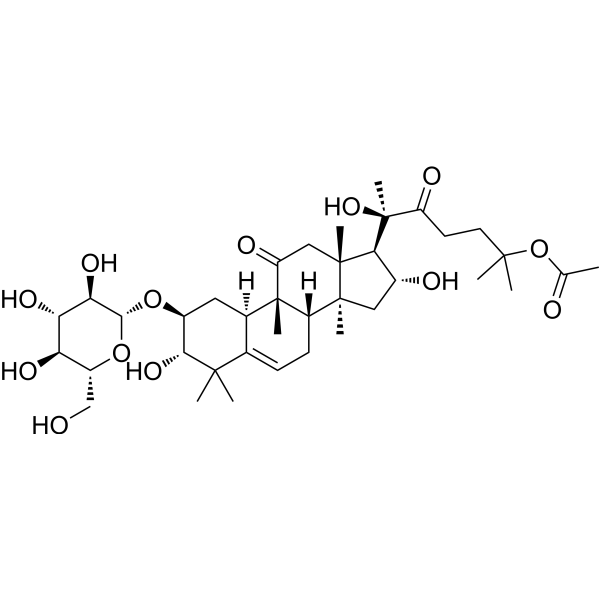
-
- HY-135398
-
|
|
Bacterial
|
Infection
Inflammation/Immunology
|
|
Decarboxy Moxifloxacin (compound 8) is a decarboxylated compound of Moxifloxacin. Moxifloxacin is an orally active 8-methoxyquinolone antimicrobial for use in acute bacterial sinusitis, acute bacterial exacerbations of chronic bronchitis, and community-acquired pneumonia .
|
-
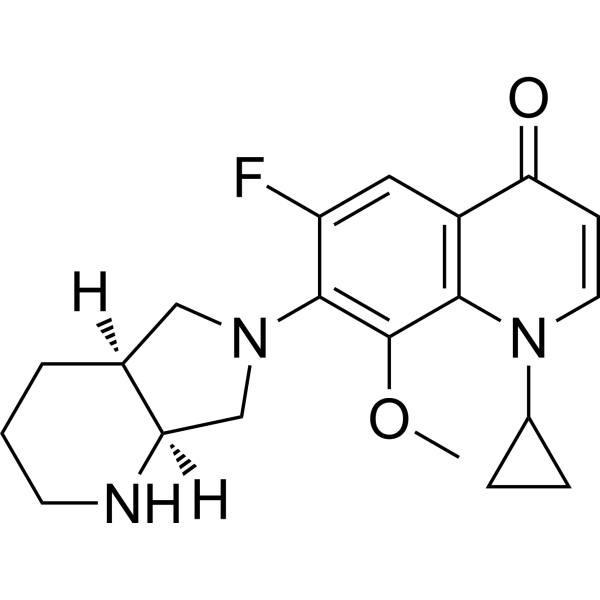
-
- HY-N8624
-
|
|
Bacterial
|
Others
|
|
Ethyl 3,4-dicaffeoylquinate is a phenolic acid isolated from G. divaricata. G. divaricata is one of the famous traditional Chinese herbs, usually used for bronchitis, tuberculosis, twisted knot cough, rheumatism, diabetes, etc .
|
-
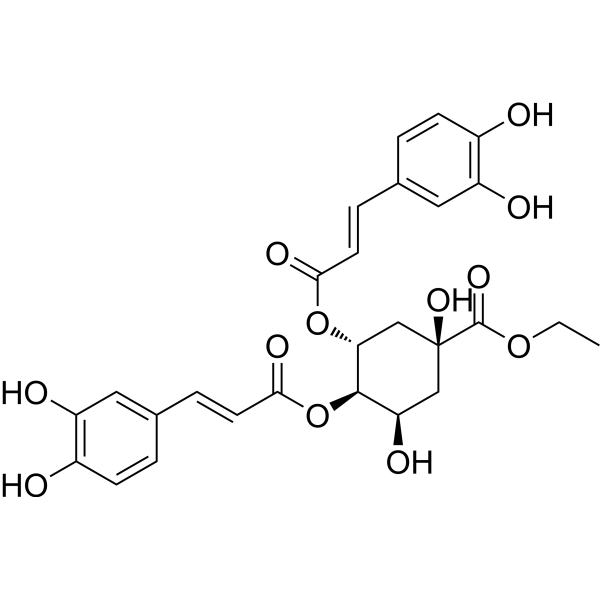
-
- HY-B0128
-
-
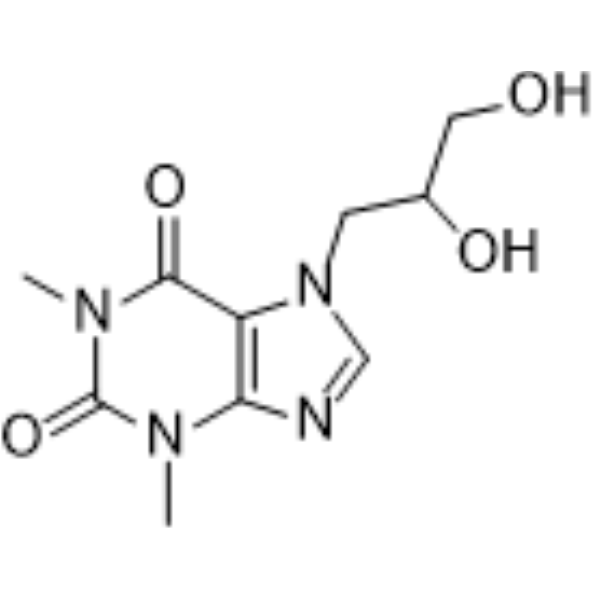
-
- HY-66011AS
-
|
BAY 12-8039-d4 free base
|
Isotope-Labeled Compounds
Bacterial
Antibiotic
|
Infection
|
|
Moxifloxacin-d4 is the deuterium labeled Moxifloxacin. Moxifloxacin is an orally active 8-methoxyquinolone antimicrobial for use in the treatment of acute bacterial sinusitis, acute bacterial exacerbations of chronic bronchitis, and community-acquired pneumonia[1][2].
|
-
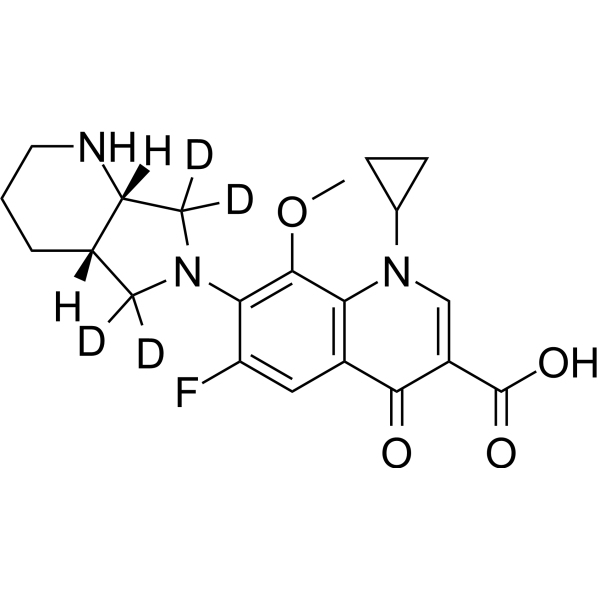
-
- HY-B2078A
-
|
|
|
|
|
Eprazinone dihydrochloride is a gent with mucolytic, secretolytic, antitussive, and bronchial antispasmodic properties. Eprazinone dihydrochloride is a neurokinin 1 receptor (NK1R) ligand. Eprazinone dihydrochloride has the potential for chronic bronchitis treatment that improved pulmonary function and arterial partial pressure of oxygen .
|
-
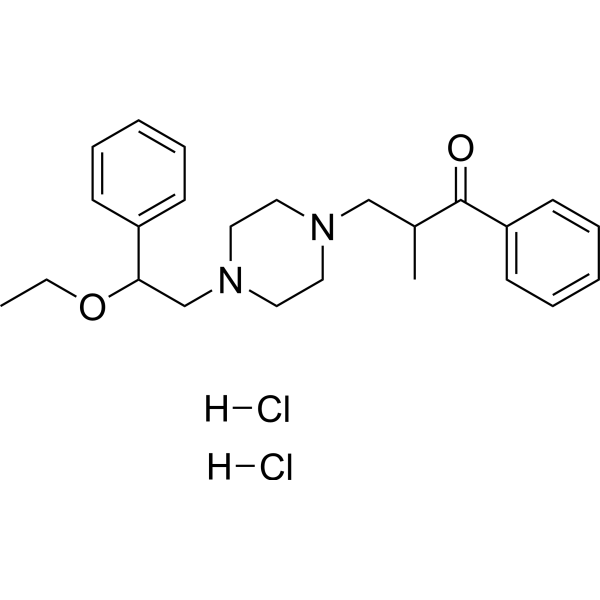
-
- HY-66011AS2
-
|
BAY 12-8039-d3
|
Bacterial
Antibiotic
|
Infection
Cancer
|
|
Moxifloxacin-d3 (hydrochloride) is the deuterium labeled Moxifloxacin hydrochloride. Moxifloxacin hydrochloride is an orally active 8-methoxyquinolone antimicrobial for use in the treatment of acute bacterial sinusitis, acute bacterial exacerbations of chronic bronchitis, and community-acquired pneumonia[1][2][3].
|
-
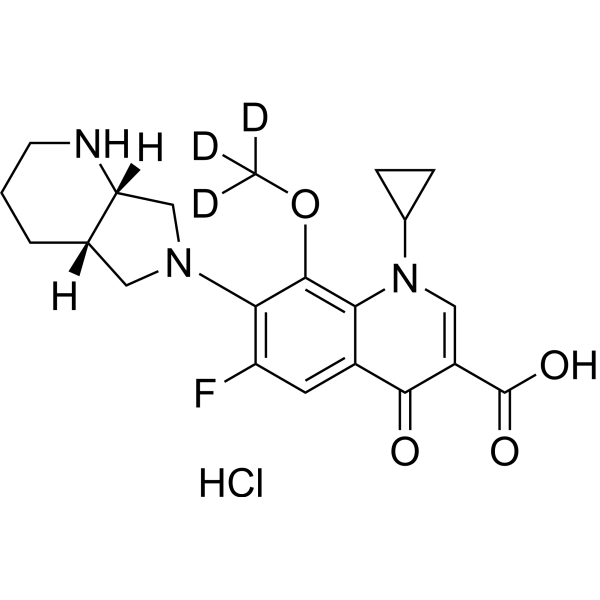
-
- HY-B0976
-
|
Th-1165; Phenoterol
|
|
|
|
Fenoterol (Th-1165), a sympathomimetic agent, is a selective and orally active β2-adrenoceptor agonist. Fenoterol is an effective bronchodilator and can be used for bronchospasm associated with asthma, bronchitis and other obstructive airway diseases research .
|
-
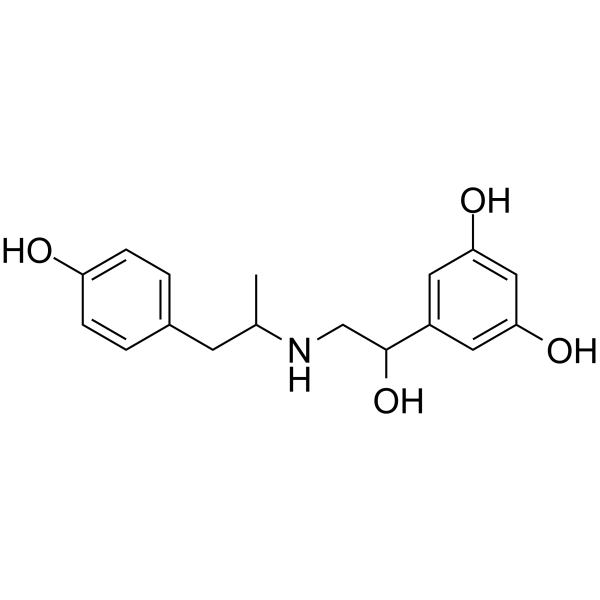
-
- HY-116229
-
|
SB-265805; LB20304
|
Antibiotic
Bacterial
|
Infection
|
|
Gemifloxacin, a fluoroquinolone, is a potent and orally active antipneumococcal agent. Gemifloxacin shows bactericidal activity against highly quinolone-resistant pneumococci.Gemifloxacin can be used for the research of respiratory infections, such as community-acquired pneumonia (CAP) and acute exacerbation of chronic bronchitis (AECB) .
|
-
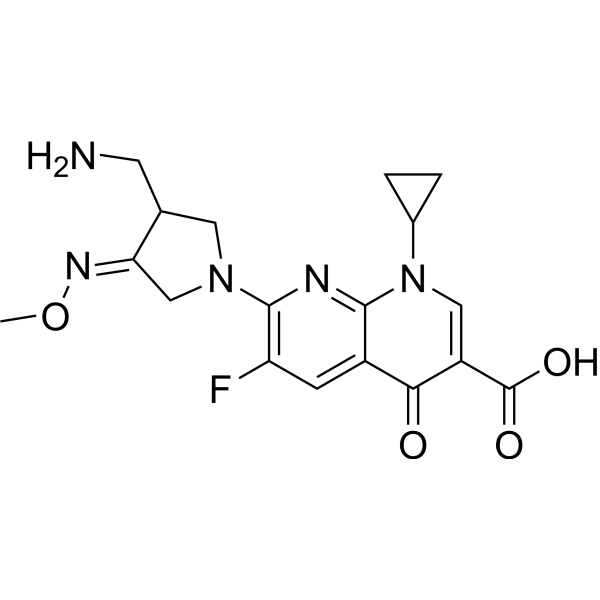
-
- HY-66011S
-
|
rac cis-BAY 12-8039-d4
|
Isotope-Labeled Compounds
Bacterial
Antibiotic
|
Infection
|
|
rac cis-Moxifloxacin-d4 (hydrochloride) is the deuterium labeled Moxifloxacin hydrochloride. Moxifloxacin Hydrochloride (BAY 12-8039) is an oral 8-methoxyquinolone antimicrobial for use in the treatment of acute bacterial sinusitis, acute bacterial exacerbations of chronic bronchitis, and community-acquired pneumonia[1][2].
|
-
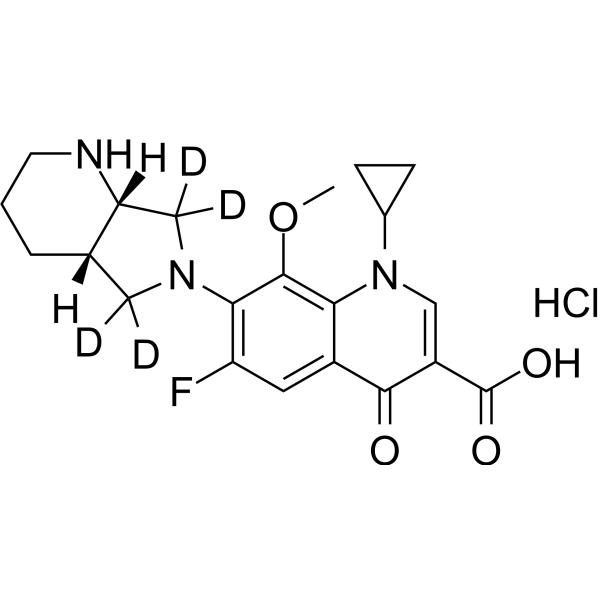
-
- HY-66011B
-
|
(Rac)-BAY 12-8039 free base
|
Bacterial
Antibiotic
|
Infection
|
|
(Rac)-Moxifloxacin ((Rac)-BAY 12-8039 free base) is the isoform of Moxifloxacin Hydrochloride (HY-66011), which is an oral 8-methoxyquinolone antimicrobial for use in the treatment of acute bacterial sinusitis, acute bacterial exacerbations of chronic bronchitis, and community-acquired pneumonia .
|
-

-
- HY-66011R
-
|
BAY 12-8039 (Standard)
|
Bacterial
Antibiotic
|
Infection
Cancer
|
|
Moxifloxacin (Hydrochloride) (Standard) is the analytical standard of Moxifloxacin (Hydrochloride). This product is intended for research and analytical applications. Moxifloxacin Hydrochloride (BAY 12-8039) is an oral 8-methoxyquinolone antimicrobial for use in the treatment of acute bacterial sinusitis, acute bacterial exacerbations of chronic bronchitis, and community-acquired pneumonia .
|
-
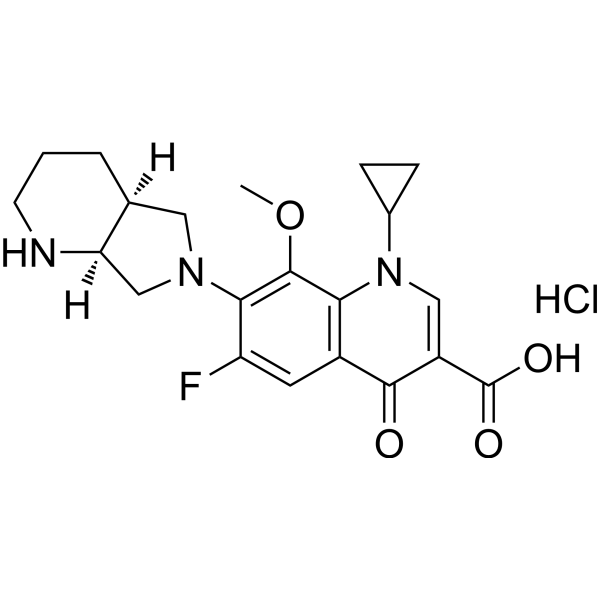
-
- HY-B0024
-
|
NM441
|
Bacterial
Antibiotic
|
Infection
|
|
Prulifloxacin (NM441) is an orally active fluoroquinolone antibiotic with a broad spectrum of activity against Gram-positive and -negative bacteria. Prulifloxacin is a proagent of a thiazeto-quinoline carboxylic acid derivative Ulifloxacin (NM394). Prulifloxacin has the potential for lower urinary tract infections and exacerbations of chronic bronchitis .
|
-

-
- HY-B0976A
-
|
Th-1165a; Phenoterol hydrobromide
|
|
|
|
Fenoterol hydrobromide (Th-1165a), a sympathomimetic agent, is a selective and orally active β2-adrenoceptor agonist. Fenoterol hydrobromide is an effective bronchodilator and can be used for bronchospasm associated with asthma, bronchitis and other obstructive airway diseases research .
|
-

-
- HY-108881
-
-
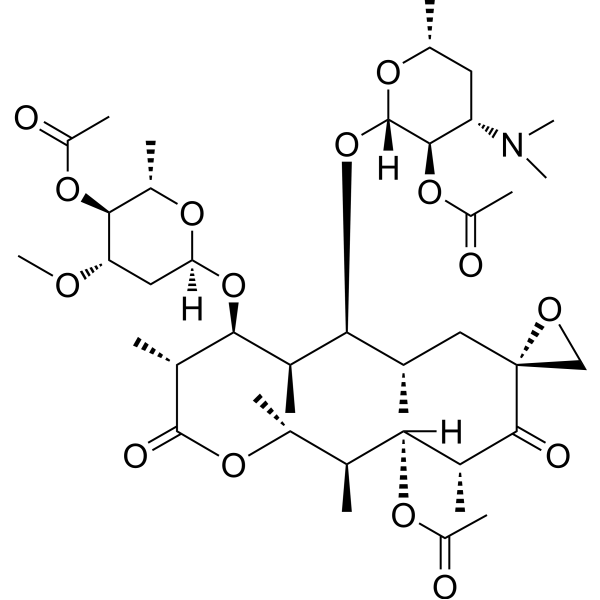
-
- HY-B0198A
-
|
|
|
|
|
Cefaclor is a well-absorbed orally active cephalosporin antibiotic. Cefaclor can specifically bind to specific for penicillin-binding protein 3 (PBP3). Cefaclor can be used for the research of depression and kinds of infections caused by bacteria, such as respiratory tract infections, bacterial bronchitis, pharyngitis and skin infections .
|
-

-
- HY-B1481
-
|
Isoetarine mesylate
|
|
|
|
Isoetharine (Isoetarine) mesylate is an orally active selective agonist of β-adrenergic receptors. Isoetharine mesylate is a catechol-like agent and catechol O-methyltransferase (COMT) mediates its methylation. Isoetharine mesylate can promote the production of cAMP which stimulates the relaxation of smooth muscle cells and can be used as an emphysema, bronchitis and bronchodilator .
|
-

-
- HY-B1481A
-
|
Isoetarine
|
|
|
|
Isoetharine (Isoetarine) is an orally active selective agonist of β-adrenergic receptors. Isoetharine is a catechol-like agent and catechol O-methyltransferase (COMT) mediates its methylation. Isoetharine can promote the production of cAMP which stimulates the relaxation of smooth muscle cells and can be used as an emphysema, bronchitis and bronchodilator .
|
-
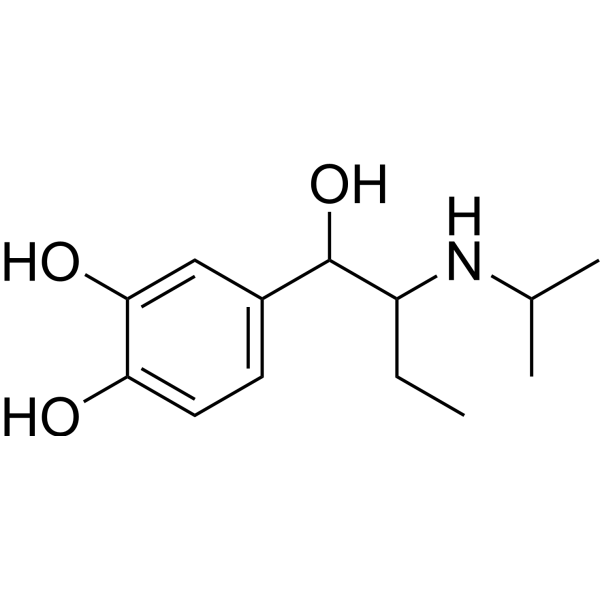
-
- HY-66011AS3
-
|
BAY 12-8039-d3-1
|
Isotope-Labeled Compounds
|
Infection
|
|
Moxifloxacin-d3-1 hydrochloride (BAY 12-8039-d3-1) is a deuterium labeled Moxifloxacin (HY-66011A). Moxifloxacin is an orally active 8-methoxyquinolone antimicrobial for use in the treatment of acute bacterial sinusitis, acute bacterial exacerbations of chronic bronchitis, and community-acquired pneumonia .
|
-
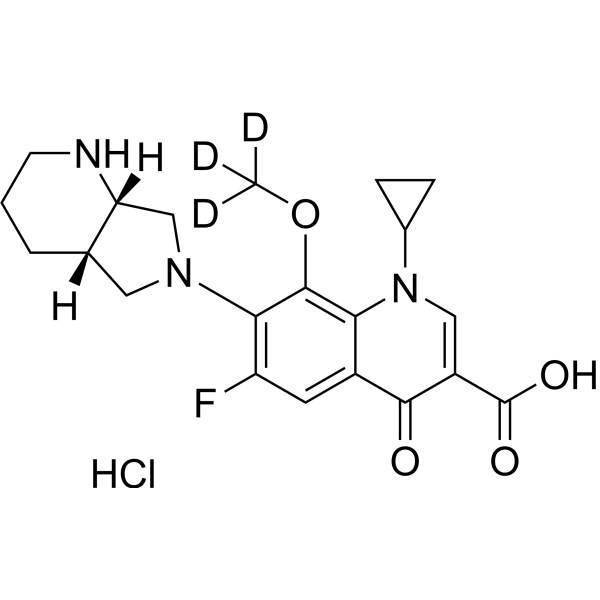
-
- HY-B1481B
-
|
Isoetarine hydrochloride
|
Others
|
Infection
|
|
Isoetharine hydrochloride is selective, short-acting and orally active β-agonist which is widely used as a bronchodilator in the research of inhalation research .
|
-
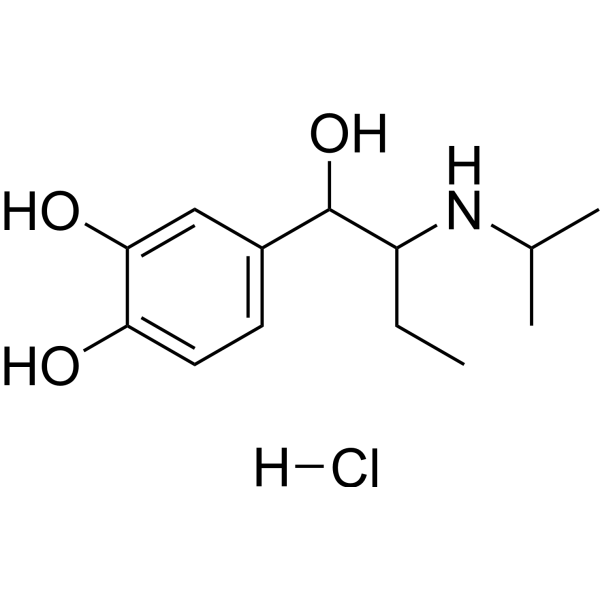
-
- HY-134664
-
|
|
Cytochrome P450
Monoamine Oxidase
|
Inflammation/Immunology
|
|
8α-(2-Methylacryloyloxy)-hirsutinolide-13-O-acetate is an irreversible CYP2A6 inhibitor with IC50s of 8.64 μM and 22.3 μM with pre-incubation and co-incubaition, respectively. 8α-(2-Methylacryloyloxy)-hirsutinolide-13-O-acetate also inhibits MAO-A and MAO-B with IC50s of 60.2 and 38.6 μM, respectively .
|
-
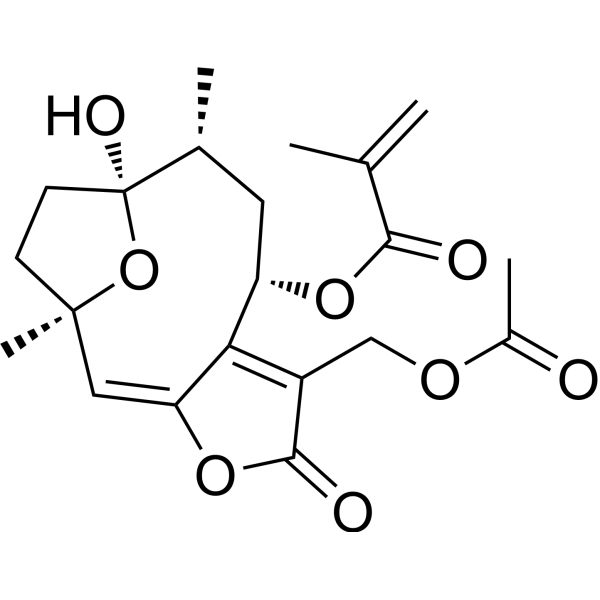
-
- HY-66011AS4
-
|
BAY 12-8039-13C,d3
|
Isotope-Labeled Compounds
|
Cancer
|
|
Moxifloxacin- 13C,d3 hydrochloride (BAY 12-8039- 13C,d3) is 13C and deuterated labeled Moxifloxacin (HY-66011A). Moxifloxacin is an orally active 8-methoxyquinolone antimicrobial for use in the treatment of acute bacterial sinusitis, acute bacterial exacerbations of chronic bronchitis, and community-acquired pneumonia.
|
-

-
- HY-19964
-
|
Potassium clavulanate:cellulose (1:1)
|
Beta-lactamase
Bacterial
Antibiotic
|
Infection
|
|
Potassium clavulanate cellulose (Potassium clavulanate:cellulose (1:1)) is a mixture of potassium clavulanate and cellulose, is a bacterial β-lactamase inhibitor. Clavulanate potassium is a form of Clavulanic acid. Clavulanate potassium fights bacteria that resistant to penicillins and other antibiotics. Potassium clavulanate with the combination of amoxicillin can be used for the research of different infections caused by bacteria, such as sinusitis, pneumonia, ear infections, bronchitis, urinary tract infections, and infections of the skin .
|
-
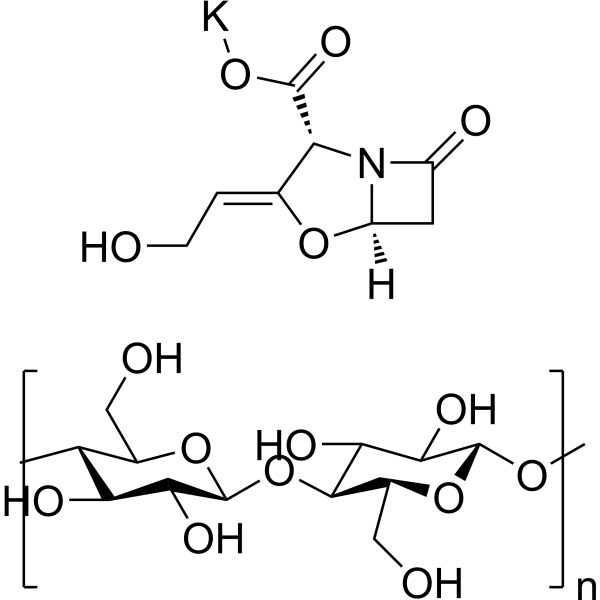
-
- HY-B0976AR
-
|
Th-1165a (Standard); Phenoterol hydrobromide (Standard)
|
Adrenergic Receptor
|
Inflammation/Immunology
Endocrinology
|
|
Fenoterol (hydrobromide) (Standard) is the analytical standard of Fenoterol (hydrobromide). This product is intended for research and analytical applications. Fenoterol hydrobromide (Th-1165a), a sympathomimetic agent, is a selective and orally active β2-adrenoceptor agonist. Fenoterol hydrobromide is an effective bronchodilator and can be used for bronchospasm associated with asthma, bronchitis and other obstructive airway diseases research .
|
-
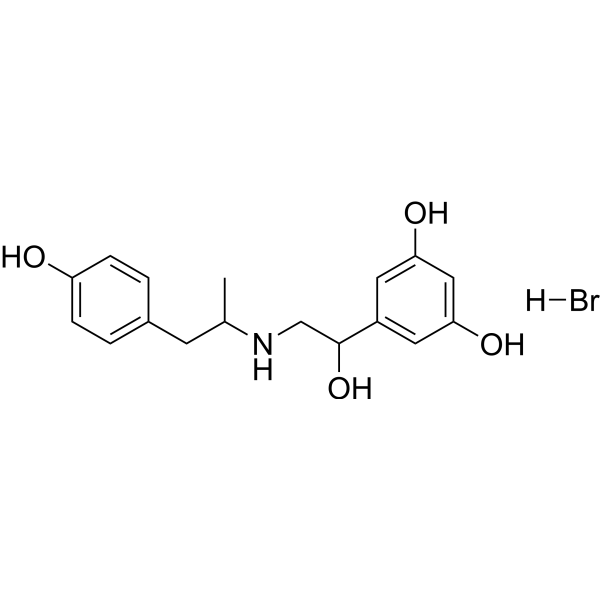
-
- HY-17452
-
|
ME 1206
|
Beta-lactamase
Bacterial
|
Infection
Inflammation/Immunology
|
|
Cefditoren sodium (ME 1206) is a broad-spectrum, third-generation, oral cephalosporin antibacterial with enhanced stability against many common β lactamases. Cefditoren sodium has activity against Gram-negative organisms and Gram-positive organisms. Cefditoren sodium can be used in the research of infection diseases such as acute exacerbations of chronic bronchitis, community-acquired pneumonia (CAP), streptococcal pharyngitis/tonsillitis, or uncomplicated skin and skin structure infections .
|
-
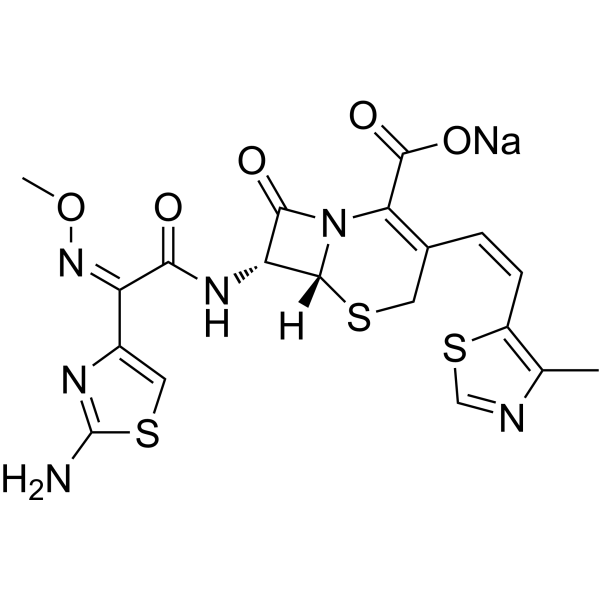
-
- HY-B0976AS
-
|
|
Adrenergic Receptor
|
Inflammation/Immunology
Endocrinology
|
|
Fenoterol-d6 (hydrobromide) (Th-1165a-d6) is the deuterium labeled Fenoterol hydrobromide. Fenoterol hydrobromide (Th-1165a), a sympathomimetic agent, is a selective and orally active β2-adrenoceptor agonist. Fenoterol hydrobromide is an effective bronchodilator and can be used for bronchospasm associated with asthma, bronchitis and other obstructive airway diseases research[1][2].
|
-

-
- HY-17452A
-
|
Cefditoren pivoxyl; Cefditoren pivaloyloxymethyl ester; ME 1207
|
Beta-lactamase
Bacterial
Antibiotic
|
Infection
Inflammation/Immunology
|
|
Cefditoren Pivoxil (ME 1207) is a broad-spectrum, third-generation, oral cephalosporin antibacterial with enhanced stability against many common β lactamases. Cefditoren Pivoxil has activity against Gram-negative organisms and Gram-positive organisms. Cefditoren Pivoxil can be used in the research of infection diseases such as acute exacerbations of chronic bronchitis, community-acquired pneumonia (CAP), streptococcal pharyngitis/tonsillitis, or uncomplicated skin and skin structure infections .
|
-

-
- HY-B0004
-
|
|
Adenosine Receptor
Phosphodiesterase (PDE)
Reactive Oxygen Species
|
Inflammation/Immunology
|
|
Doxofylline is an orally active PDE IV inhibitor and A1AR antagonist. Doxofylline reduces inflammation in epithelial cells via inhibiting mitochondrial ROS production and amelioration of multiple cellular pathways (NLRP3-TXNIP inflammasome activation). Doxophylline can be used in studies of asthma, chronic obstructive pulmonary disease, and bronchospasm .
|
-

-
- HY-N0825
-
-
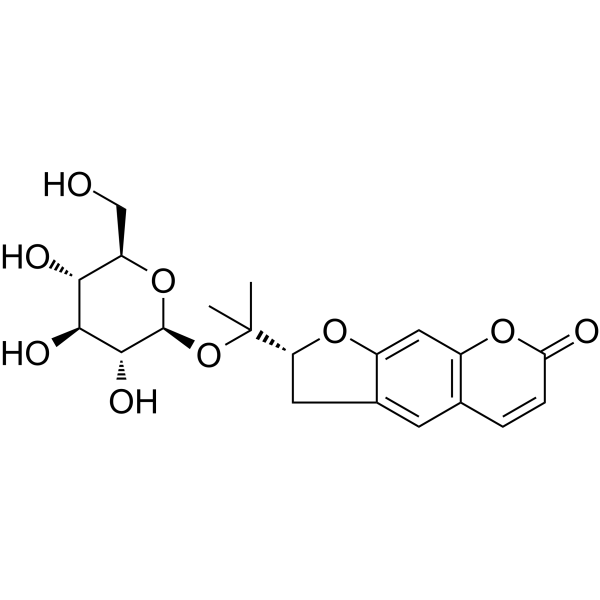
-
- HY-147818
-
|
|
Bacterial
DNA/RNA Synthesis
|
Infection
|
|
DNA Gyrase-IN-2 (Compound 22a) is a bacterial DNA gyrase B inhibitor with IC50s of 3.29-10.49 and 4.41-5.61 µM for E. coli DNA gyrase and M. tuberculosis DNA gyrase. Anti-tubercular and antibacterial activity .
|
-
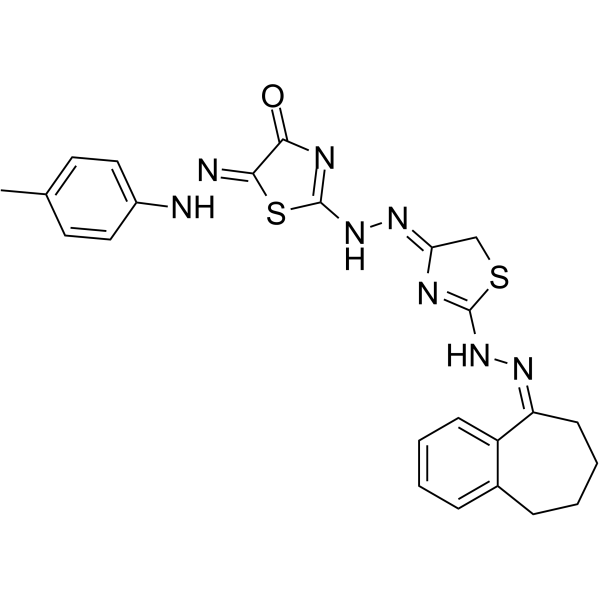
-
- HY-147819
-
|
|
Bacterial
DNA/RNA Synthesis
|
Infection
|
|
DNA Gyrase-IN-3 (Compound 28) is a bacterial DNA gyrase B inhibitor with IC50s of 5.41-15.64 µM for E. coli DNA gyrase. Anti-tubercular and antibacterial activity .
|
-
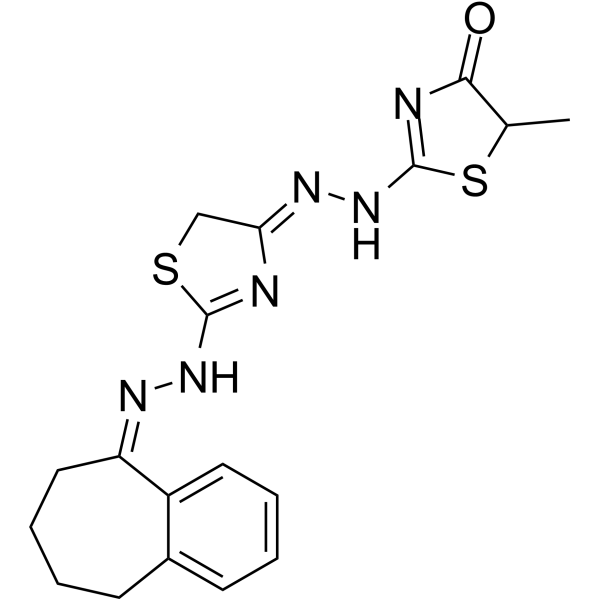
-
- HY-B0372
-
|
|
Others
|
Inflammation/Immunology
|
|
Bromhexine is a potent expectorant. Bromhexine increase mucociliary clearance and reduces cough. Bromhexine can be used in study various respiratory diseases .
|
-
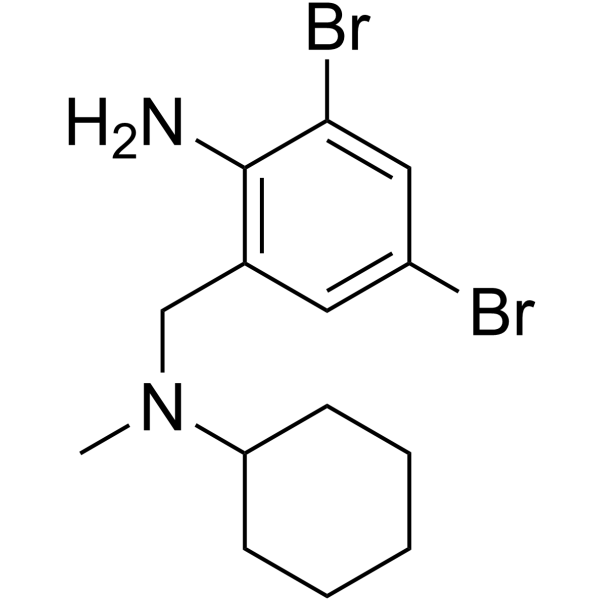
-
- HY-B0455
-
|
SC47111A hydrochloride
|
Bacterial
Antibiotic
|
Infection
|
|
Lomefloxacin (SC47111A) hydrochloride is a broad-spectrum quinolone antibiotic, with antimicrobial activity. Lomefloxacin hydrochloride is used for the research of respiratory tract infections, genitourinary infections, gastrointestinal infections, ENT infections, etc. .
|
-
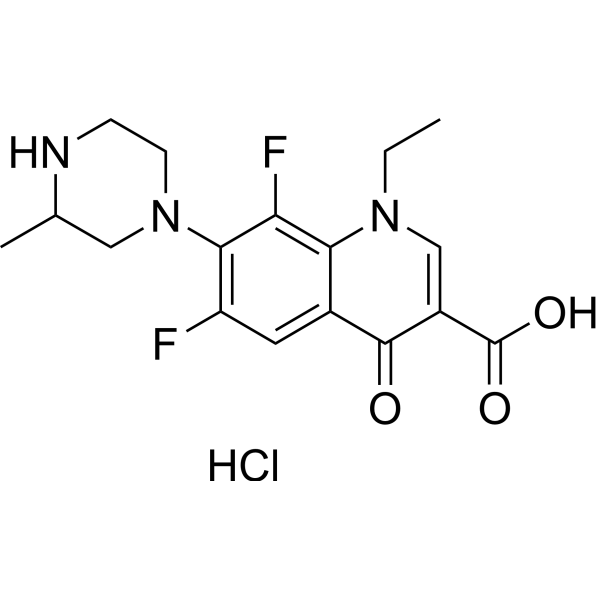
-
- HY-B0455A
-
|
SC47111A
|
Bacterial
Antibiotic
|
Infection
|
|
Lomefloxacin (SC47111A) is a broad-spectrum quinolone antibiotic, with antimicrobial activity. Lomefloxacin is used for the research of respiratory tract infections, genitourinary infections, gastrointestinal infections, ENT infections, etc. .
|
-
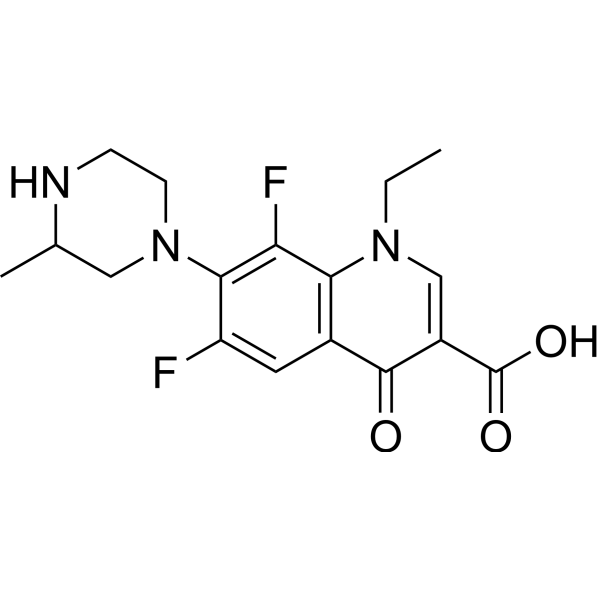
-
- HY-136205
-
|
Iodoacetamide-alkyne; N-Hex-5-ynyl-2-iodo-acetamide
|
TRP Channel
|
Infection
Inflammation/Immunology
|
|
IA-Alkyne (Iodoacetamide-alkyne; N-Hex-5-ynyl-2-iodo-acetamide) is a TRP channel (TRPC) agonist and has the potential for the study of respiratory infection . IA-Alkyne can be used to develop an isotopically tagged probe for quantitative cysteine-reactivity profiling . IA-Alkyne is a click chemistry reagent, it contains an Alkyne group and can undergo copper-catalyzed azide-alkyne cycloaddition (CuAAc) with molecules containing Azide groups.
|
-
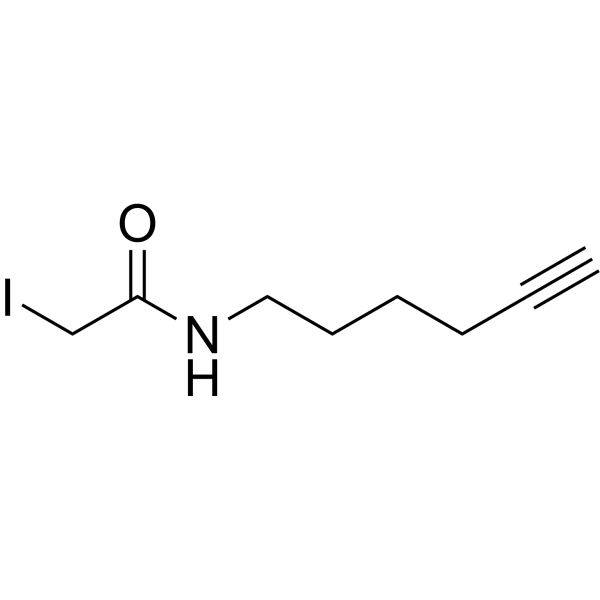
| Cat. No. |
Product Name |
Category |
Target |
Chemical Structure |
| Cat. No. |
Product Name |
Chemical Structure |
-
- HY-66011AS
-
|
|
|
Moxifloxacin-d4 is the deuterium labeled Moxifloxacin. Moxifloxacin is an orally active 8-methoxyquinolone antimicrobial for use in the treatment of acute bacterial sinusitis, acute bacterial exacerbations of chronic bronchitis, and community-acquired pneumonia[1][2].
|
-

-
- HY-66011AS2
-
|
|
|
Moxifloxacin-d3 (hydrochloride) is the deuterium labeled Moxifloxacin hydrochloride. Moxifloxacin hydrochloride is an orally active 8-methoxyquinolone antimicrobial for use in the treatment of acute bacterial sinusitis, acute bacterial exacerbations of chronic bronchitis, and community-acquired pneumonia[1][2][3].
|
-

-
- HY-66011S
-
|
|
|
rac cis-Moxifloxacin-d4 (hydrochloride) is the deuterium labeled Moxifloxacin hydrochloride. Moxifloxacin Hydrochloride (BAY 12-8039) is an oral 8-methoxyquinolone antimicrobial for use in the treatment of acute bacterial sinusitis, acute bacterial exacerbations of chronic bronchitis, and community-acquired pneumonia[1][2].
|
-

-
- HY-66011AS3
-
|
|
|
Moxifloxacin-d3-1 hydrochloride (BAY 12-8039-d3-1) is a deuterium labeled Moxifloxacin (HY-66011A). Moxifloxacin is an orally active 8-methoxyquinolone antimicrobial for use in the treatment of acute bacterial sinusitis, acute bacterial exacerbations of chronic bronchitis, and community-acquired pneumonia .
|
-

-
- HY-66011AS4
-
|
|
|
Moxifloxacin- 13C,d3 hydrochloride (BAY 12-8039- 13C,d3) is 13C and deuterated labeled Moxifloxacin (HY-66011A). Moxifloxacin is an orally active 8-methoxyquinolone antimicrobial for use in the treatment of acute bacterial sinusitis, acute bacterial exacerbations of chronic bronchitis, and community-acquired pneumonia.
|
-

-
- HY-B0976AS
-
|
|
|
Fenoterol-d6 (hydrobromide) (Th-1165a-d6) is the deuterium labeled Fenoterol hydrobromide. Fenoterol hydrobromide (Th-1165a), a sympathomimetic agent, is a selective and orally active β2-adrenoceptor agonist. Fenoterol hydrobromide is an effective bronchodilator and can be used for bronchospasm associated with asthma, bronchitis and other obstructive airway diseases research[1][2].
|
-

| Cat. No. |
Product Name |
|
Classification |
-
- HY-136205
-
|
Iodoacetamide-alkyne; N-Hex-5-ynyl-2-iodo-acetamide
|
|
Alkynes
|
|
IA-Alkyne (Iodoacetamide-alkyne; N-Hex-5-ynyl-2-iodo-acetamide) is a TRP channel (TRPC) agonist and has the potential for the study of respiratory infection . IA-Alkyne can be used to develop an isotopically tagged probe for quantitative cysteine-reactivity profiling . IA-Alkyne is a click chemistry reagent, it contains an Alkyne group and can undergo copper-catalyzed azide-alkyne cycloaddition (CuAAc) with molecules containing Azide groups.
|
Your information is safe with us. * Required Fields.
Inquiry Information
- Product Name:
- Cat. No.:
- Quantity:
- MCE Japan Authorized Agent:


























































